#qianlong
Explore tagged Tumblr posts
Text
Qianlong

It has long been assumed that dinosaurs probably laid hard-shelled eggs, but the discovery of Qianlong has challenged this idea. Qianlong is a basal sauropodomorph dinosaur from the Early Jurassic of China, known from three adult specimens and five clutches of elliptical eggs. These eggs appear to have been leathery and flexible in structure, and they represent the oldest leathery eggs currently known. The preserved embryos suggest that in Qianlong juveniles, the skull and arms are proportionally larger than the adults, implying that Qianlong was bipedal as an adult, but likely quadrupedal as a young juvenile.
61 notes
·
View notes
Text
Qianlong shouhu Han et al., 2023 (new genus and species)
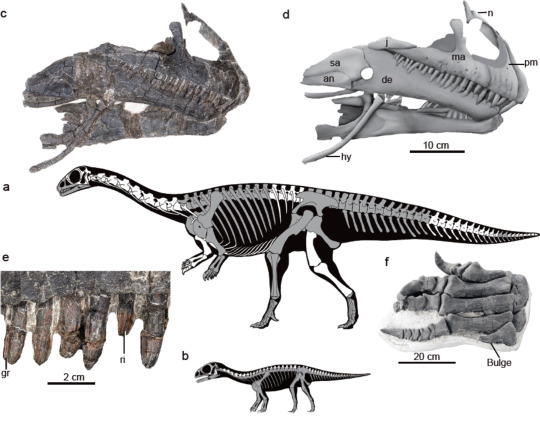
(Select bones and schematic skeletals of adult [a] and embryonic [b] individuals of Qianlong shouhu, with preserved bones in gray, from Han et al., 2023)
Meaning of name: Qianlong = Qian [alternative name for Guizhou] dragon [in Chinese]; shouhu = guarding [in Chinese]
Age: Early Jurassic (Sinemurian?)
Where found: Ziliujing Formation, Guizhou, China
How much is known: Three partial skeletons of adult individuals and five clutches of 3–16 eggs containing embryos.
Notes: Qianlong was an early sauropodomorph. It is notable not only for the exceptional preservation of its fossils, but also the fact that these specimens appear to be associated with nests, thus offering valuable information on their growth and reproductive behavior. As has also been found for some early sauropodomorphs, such as Massospondylus from the Early Jurassic of Southern Africa and Mussaurus from the Early Jurassic of Argentina, Qianlong appears to have laid its eggs in breeding colonies with adult individuals potentially watching over their nests. Qianlong was additionally similar to these other early sauropodomorph in being bipedal as an adult, but likely quadrupedal as a young juvenile.
Rigid, hard-shelled eggs have been found in multiple groups of dinosaurs, including tetanuran theropods (such as birds), hadrosaurids (duck-billed dinosaurs), and titanosaurian sauropods, as well as their closest living relatives, the crocodylians. As a result, it was long assumed that all dinosaurs probably laid hard-shelled eggs. However, recent evidence has suggested that the eggs of early dinosaurs may have instead had flexible, leathery shells, more similar to those of most lizards and some turtles, with rigid eggshells evolving several times in later dinosaur groups. The eggshells of Qianlong appear to have been leathery in structure, lending support to this hypothesis.
Reference: Han, F., Y. Yu, S. Zhang, R. Zeng, X. Wang, H. Cai, T. Wu, Y. Wen, S. Cai, C. Li, R. Wu, Q. Zhao, and X. Xu. 2023. Exceptional Early Jurassic fossils with leathery eggs shed light on dinosaur reproductive biology. National Science Review advance online publication. doi: 10.1093/nsr/nwad258
144 notes
·
View notes
Text
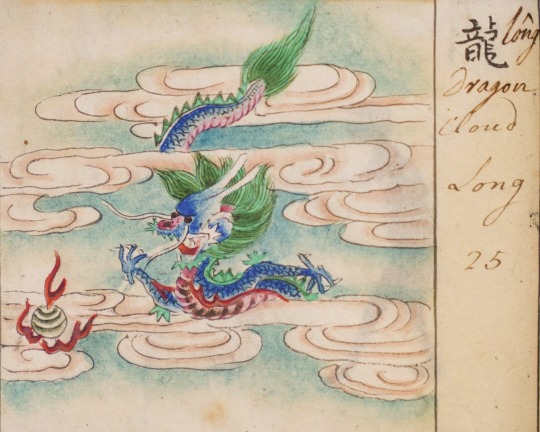
30 notes
·
View notes
Text
Historical Figures Brought To life. Vol. 6. You Haven't Seen Anything Like This Before!
youtube
Julia Agrippina, Ferdinand II of Aragon, Anna of Austria, Qianlong, Abigail Adams, Chhatrapati Shivaji I, Anne Boleyn, Charles II of Spain, Elizabeth Alexeievna, Jesus of Nazareth,
#Julia Agrippina#Ferdinand II of Aragon#Anna of Austria#Qianlong#chinese#roman#spanish#american#Abigail Adams#Chhatrapati Shivaji I#Anne Boleyn#british#Charles II of Spain#Elizabeth Alexeievna#russian#Jesus of Nazareth#jewish#artificial intelligence#videos
7 notes
·
View notes
Text
Empress UlaNara (乌拉那拉皇后)
Among the most controversial empresses in Chinese imperial history, Empress Nara stands out prominently. Little is known about her early childhood, upbringing, or even her personal name. What we know for sure is that she came from the influential Ula Nara clan, one of the most prominent Jurchen (later Manchu) families of the time.
Ulanara’s journey to the throne of the empress began as a consort to the Qianlong Emperor.After the death of his first wife, Empress Xiaoxianchun,Ulanara was elevated to the status of Empress in 1750. However, her relationship with the emperor was never as affectionate as that of his first empress. Despite her new rank, she seemed to live in the shadow of her predecessor, a factor that may have contributed to the eventual breakdown of her relationship with Qianlong.
It is not known why exactly caused the estrangement of the pair. Everything fell apart in 1765 during an imperial tour to southern china when the empress, for unknown reasons allegedly cut a piece of her hair as a sign of retaliation.
That action would forever seal her fate as then Qianlong publicly denounced her of her title, stripped her of all power and sent her to exile
Empress Ulanara died shortly after her disgrace in 1766, while still exiled from court life. Although she was buried in the imperial tombs, her burial rites were notably diminished compared to those of other empresses, reflecting her fall from favor.
Nara is really my favorite empress, you wouldn’t exactly expect women of that time and especially that rank to behave in such a manner but i so get it (she was just a girl), anyways, tragic but fascinating.
(it is also said all her portraits where destroyed so we don’t know if this is actually her)
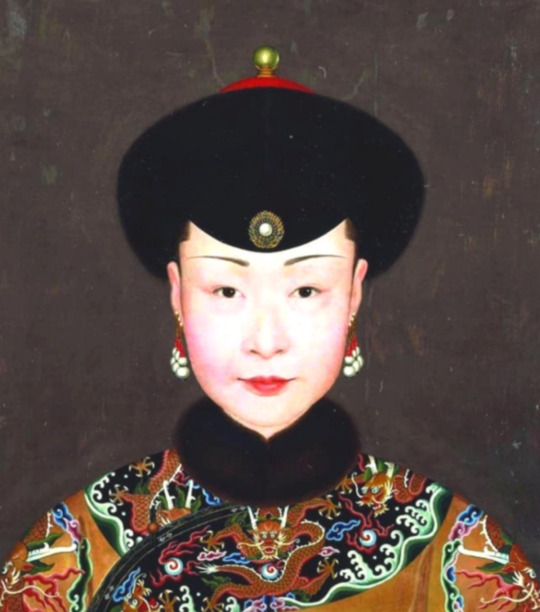
#china#chinese history#history#education#language#qing dynasty#archaeology#etymology#18th century#qing#ula nara#qianlong
8 notes
·
View notes
Text


"Ten Thousand Nations Coming to Pay Tribute" (万国来朝图轴)
Qianlong-era scroll paintings depicting myriads of nations coming to pay homage to Qianlong Emperor on the 26th year of his reign, 1761.
There is a wintertime version, where the Forbidden City is covered is snow, and a summertime one, with a different perspective. We can see scenes of daily life inside the palaces as well as various delegations from Asia and Europe.
3 notes
·
View notes
Text
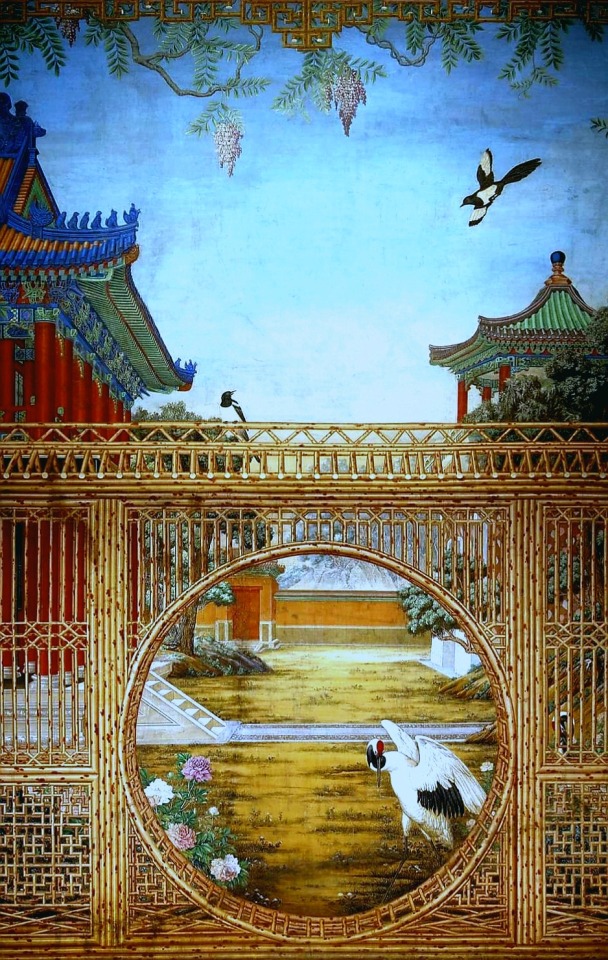

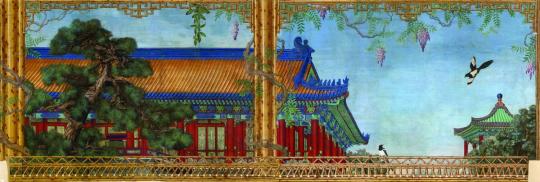
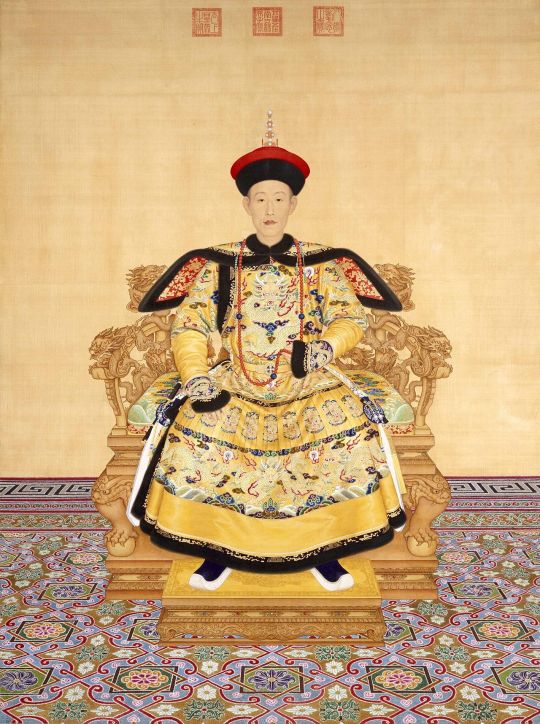

Giuseppe Castiglione (Italian Jesuit missionary and court painter, 1688 - 1766), a.k.a. Láng Shìníng, Qianlong, Emperor of Qing dynasty (reigned 1735-96).
youtube
The Emperor's Secret Garden
#giuseppe castiglione#qianlong#ch'ien-lung#chundi#forbidden city#beijing#china#magpies#manchurian crane#red crowned crane#Youtube#chinese history
45 notes
·
View notes
Text


Qing, Qianlong, Iron-red and underglaze-blue 'dragon' dish, n.d. x
2 notes
·
View notes
Text

Vase dit "Aux Cent Daims" de la Dynastie Qing sous le règne de Qianlong (1736-1795) dans les collections permanentes du Musée Guimet, octobre 2024.
4 notes
·
View notes
Note
Hitting you up because I want to hear more about Emperor Qianlong's art collection! My two big all-consuming hobbies are drawing and reading about history, so I pretty much can't get enough of either topic
OH OH where to BEGIN with Qianlong and his love of the arts???? And also okay he historically is SUCH a funky guy idk where to even begin on how much I love cool and kind of failflop Qianlong facts. If you want to know about his hilarious terrible poetry I leave you with this poem he wrote about cucumbers:
It is the best ingredient on the plate in Beijing;
I tasted it lately in February, but how can I give it a review?
Weighing down the trellis, and embellishing the fence, it looks so beautiful,
The rural landscape contains true feelings.
No this isn’t any better in Chinese. You can find it and other Qianlong poetry roasts here.
Okay, I don’t know if Qianlong’s art collection/paintings created for him can be contained in a single answer, BUT, I’ll do my best!
Emperor Qianlong was an avid patron of the arts, and his collection of paintings, jade pieces, and other antiques remain one of the greatest reasons why we still have a lot of the pieces on display around the world today. He was also in the habit of writing on/stamping his personal seal on his favorite paintings and art pieces, and some of these repeatedly viewed paintings (with his notes/thoughts/writings) also preserve great portions of his life, which is a really intimate look into him as a person especially throughout time. We rarely get this sort of information from a ruler since MOST imperial writing has been edited/was meant to present to other people. He also liked to take landscape paintings with him on his travels to compare the landscapes in the paintings to their irl presentation.
His habit of turning his favorite paintings into diaries is NOT a common practice btw, most people didn’t deface the paintings in their collections. (Okay they might put their personal stamp on it to explain that they own it, but WRITING NEW SHIT ON IT? nah.)
Art historians, btw, have been in argument about his practice of defacing paintings and basically being in conversation with them ON the painting itself, since practically the time he started doing this about if it’s destroying the art or enhancing it somehow. He was just. SUCH a guy.
(He uh, may also have used coercion, threats, and force to acquire some of these because he was the emperor and he wanted them. This behavior was normal for emperors but his obsession with art and antiques was slightly less normal. Like, this man was IN LOVE with art.)
The OTHER hilarious thing about Qianlong was that while he LOVED paintings and antiques and poetry and art he uh, well okay see the above roast re his poetry but he wasn’t very good at any of these things per se. (For example, there are multitudes of stories about how he’d get really happy about a certain painting or antique in his collection, only to discover that it was a GREAT forgery or a fake or not actually all that old and oh here’s the actual thing your majesty this is the real one and be SO embarrassed by this new knowledge that he’d just KEEP BOTH and pretend nothing was wrong. Like just WHAT a guy. What a guy lmao.)
Qianlong also really loved western style paintings and painters. For example, Giuseppe Castiglione was one of his favorite court painters (Chinese Name Lang Shining) and did these two paintings of Emperor Qianlong:
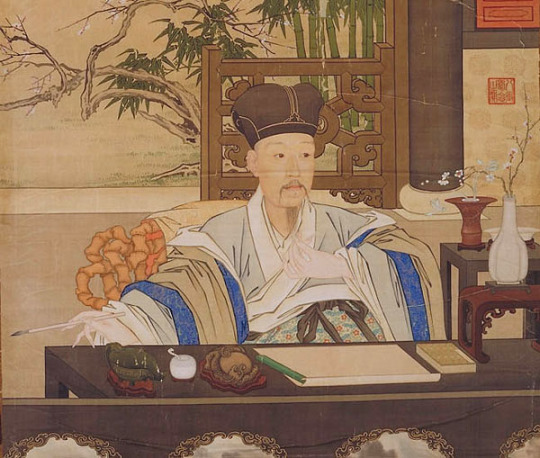
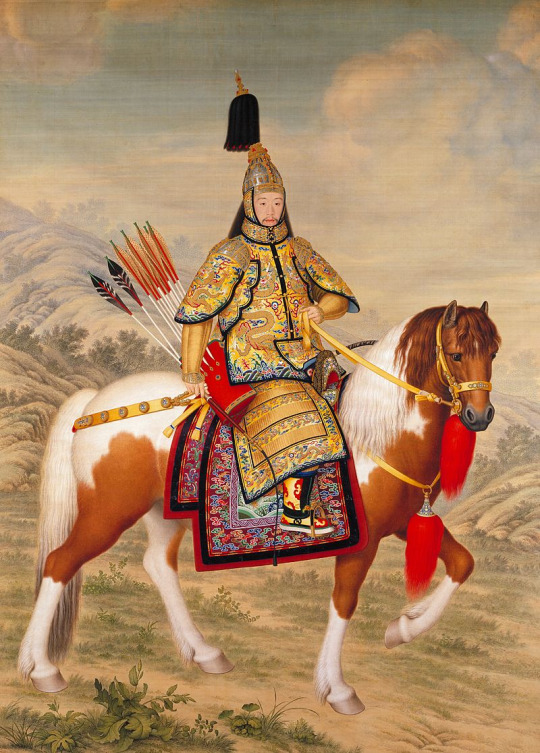
These two paintings are like, some of my favorite things because like, the combination of east and west, and utilization of like, different techniques and perspectives is !!!! in my brain. Like, it’s incredible and I love it so much.
Qianlong also incorporated a lot of western style architectural elements in his redesign and beautification of Yuanmingyuan and had a REALLY interesting life overall, but this is getting kind of long so 😂I’ll leave off for now.
Feel free to ask about anything that sounds interesting about this though! I love to ramble.
#qianlong#asks and answers#history#chinese history#he was just SUCH a guy#if I had historical blorbos this would be a historical blorbo
35 notes
·
View notes
Text

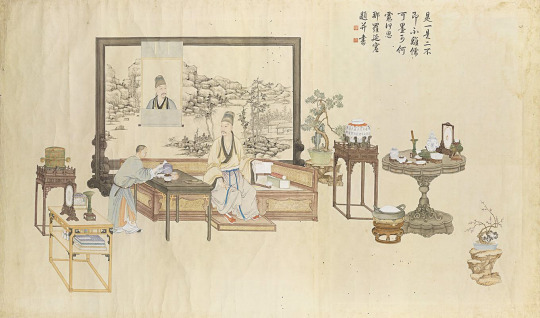

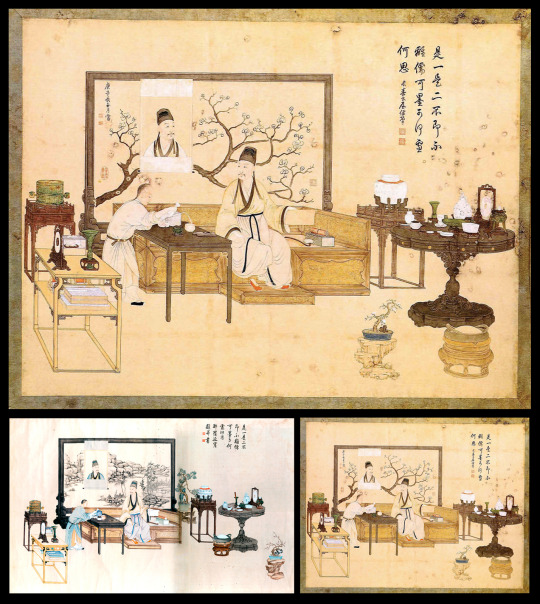
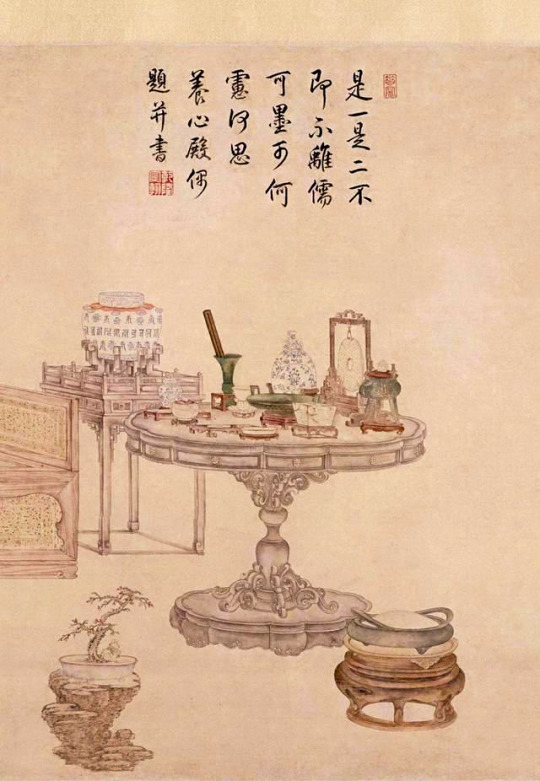
Qianlong Emperor’s Penzai Trees-
The Qianlong emperor was especially skilled with sword, brush, and bow. He was also quite the art connoisseur, amassing a unique collection during his lifetime. These two versions of this painting of the emperor with some of his treasures both include Chinese Penzai (better known by the Japanese term for these trees, Bonsai).
What I find most interesting, is that these Chinese Penzai trees are quite similar in feel to Japanese Bonsai. Judging from the fair number of contemporary Chinese Penzai I encountered on my many trips around China, one has the impression that the Chinese approach to this art is one where the tree are generally fuller, with more foliage. That does not appear to be the case for Penzai styled during the Qing period.
It is also interesting to note that while Penzai does not appear to have been as popular in Imperial China as it was in Japan during the same period, these trees were still treasured by some literati.
#penzai#penjing#bonsaipenjing#bonsai#swordsmanbonsai#scottmrodell#scottrodell#bonsaitree#qianlong#qingdynasty#qingpenzai
8 notes
·
View notes
Text

Qianlong Emperor at Full Draw. Interesting to note the length of the fletching. During the 18th century, the fletching on Manchu arrows easily fit within the brace height.
#manchurian#qingdynasty#qianlong#manchuarchery#manchuarcher#traditionalarchery#chinesearcher#chinesearchery#traditonalarchery#bannerman#manchubannerman
2 notes
·
View notes
Text
New poll, New Punishment!
Alright, folks the time has come again for another punishment poll where you get to vote what punishments I subject Hongli to in recompense for his entire harem! (Going for a total of fifty punishments, one for every member of the harem, plus one for good measure.)
Remember, this is for the transmigration fic where Hongli gets thrashed and then thrown back to the day he ascended the throne. Last poll, incurable itching won the round. What will win this time?
Sorry I can't find my taglist
#legend of ruyi#heaven's guidance#Aisin-Gioro Hongli#fanfiction#ruyi's royal love in the palace#ruyis royal love in the palace#qianlong
2 notes
·
View notes
Text

A rare and finely-carved ritual conch trumpet
Qing dynasty, Qianlong period
Sotheby’s
127 notes
·
View notes
Text
Emperor Qianlong and his influence on the Qing Dynasty
Qianlong (乾隆皇帝) , personal name “HongLi” was born on September 25 of 1711 in Beijing, China.
He was the fourth and favorite son of Emperor Yongzheng and ascended the throne in 1735 and reigned for more than 60 years.
The Emperor had a strong resilient spirit as he excelled both in military campaigns, allowing China to flourish with the chinese empire reaching its peak years during his 60 year reign, but he was also an enjoyer of arts and literature preserving the spirits of his father and grandfather who where both equally invested in this aspect.
During his lifetime he had about 50 consorts and concubines that served him including 3 empresses, 5 imperial noble consorts, 5 noble consorts, 6 consorts, 6 imperial concubines, 12 noble ladies, 4 female attendants, 5 “choice ladies” and 2 GeGe (格格)
the most famous out of all of them was Ula Na’ra (The Empress Nara of the Nara clan) (i will make another post explaining this and getting more in depth with her personal story)
now there are a lot of things i could say about Qianlong but it will be divided into many many parts as the story and dramas are never-ending (why do u think there are so many series based on him ?hahah)


Qianlong

Empress Nara
if u read my previous post you’ll know why she’s wearing three earrings in each ear 😏😙
*fun fact Qianlong is believed to have destroyed all of her portraits so we don’t actually know if this is actually her*
(Chinese equivalent of Anne Boleyn ??)
#china#chinese history#history#qing dynasty#education#language#qianlong#qing#ancient china#18th century
8 notes
·
View notes
Text

"Ayuxi assaults the rebels wielding his spear" (阿玉锡持矛荡寇). 1755.
Painted Giuseppe Castiglione (1688-1766, italian) painter of the Qing court under the Qianlong Emperor.
It depicts Ayuxi (阿玉锡), dzungar officer who fought the Dzungar Khanate during the attempts of the Qing empire to stabilize northern Xinjiang under its influence. The painting was commissioned by the Emperor to celebrate Ayuxi's victories in 1755 when he stormed the enemies' camp at Gädän-Ola.
3 notes
·
View notes